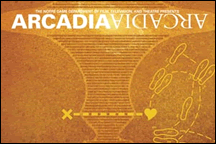
How does one provide lighting for a play thats about ideasnot action?
That was the question keeping Kevin Dreyer awake at night prior to the recent opening ofArcadiaat theMarieP.DeBartoloCenterfor the Performing Arts.
As lighting designer for the play by Tom Stoddard, Dreyer felt challenged by its various abstract scientific and mathematical themes, and by its many sitting-and-talking scenes.
The play explores such topics as the second law of thermodynamics, which says disorder will increase until all energy, light and life are gone.Studying such theories can either drive you mad or enthrall you, making your days both timeless and timely.
Its wanting to know that makes us matter,says a character in the play.Otherwise were going out the way we came in.Added to this portent are love and sex, mystery and abstraction in art, all colored by British social mores.
To provide stage lighting for this heady mix, Dreyer, associate professor and director in the theatre program, was able to draw upon his experience in the realm of dance theater, in which movement conveys a broad range of ideas.
A freelance lighting designer whos worked forChicagos Joffrey Ballet, inChicagoand on various tours including recent performances inAmsterdam, hes been able to work with dance professionals from all over the world.
In addition to being somewhat abstract, dance lighting is also psychological.Dryers latest project with the Joffrey wasDark Elegies,a 1937 Anthony Tudor piece about accepting loss while knowing that life goes on.It helped Dreyer hone what he calls adelicate touch,which he employs for the intricate ideas that develop inArcadia.
People like big, bold, action designs, and this one (Dark Elegies) was not,Dreyer says.I learned how to let the design envelop and hold the artistic event, instead of defining it.You have to give it a place in which it can exist.
As a teaching exercise,Arcadiagives students experience in hanging lights, focusing them and then operating the light board in accordance with a written lighting plot compiled by Dreyer. They learn that a lighting plota roadmap to the location of every single lighting instrument in the playhelps communicate theatrical ideas, but also helps the designer organize his or her thought process, he explains.
Timing, color, hue and angles can bepushed and pulledin the abstract, beyond traditional limitations, and the equipment in the newDeBartoloCenteraffords considerable flexibility. For example, the theater department now has five times the number of dimmers it had while housed in Washington Hall.
TopicID: 10825